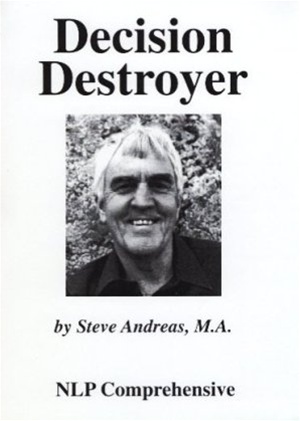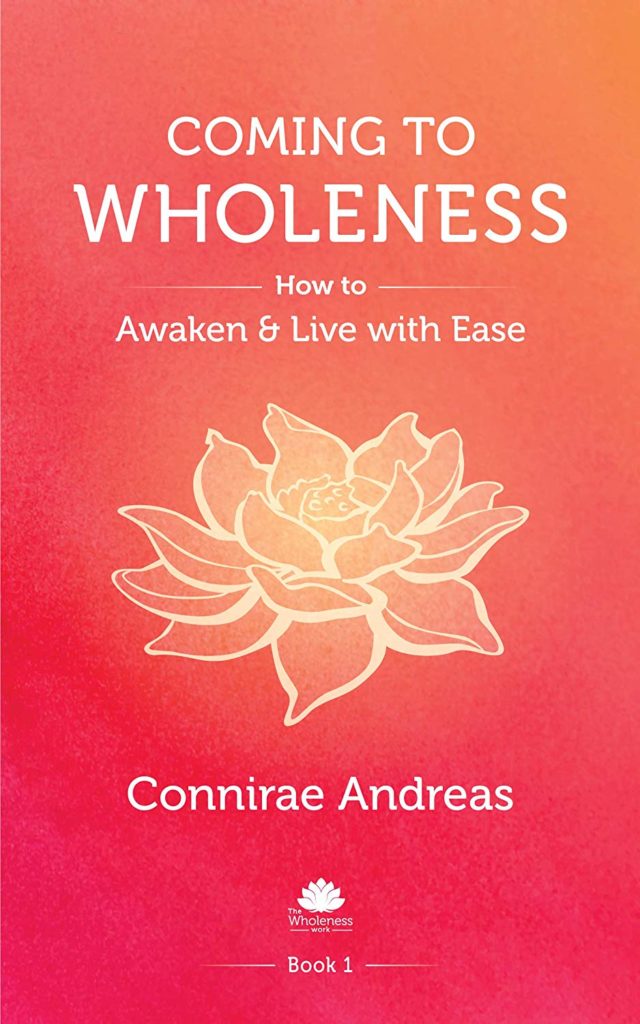- Store
-
Audio
- The Decision Destroyer
The Decision Destroyer
$19.95

The “Decision Destroyer” is recognized as one of the more impactful sumbodalities patterns, enabling you to accomplish reimprinting more rapidly and more thoroughly.
This program teaches you how to create robust personally-compelling resources and put them into your personal history before you needed them. When these resources are brought forward through time, all of the problem-related experiences are suddenly re-evaluated in a useful, even positive way. Regarded as powerful and transformative, the Decision Destroyer takes reimprinting to a new dimension.
Recorded at a 1989 workshop, Steve Andreas demonstrates how this highly effective process is useful for solving current life problems, which stem from past experiences. The “decision destroyer” is a rapid method originally developed by Richard Bandler, co-developer of Neuro-Linguistic Programming (NLP). It uses structural submodality elements to change traumatic imprints in one session.
Although it is usually difficult to change a traumatic imprint directly, it is quite easy to use the same structural elements to create a new powerful positive imprint and install it at a time in the past before the traumatic one. Then when the client travels forward in time with this new imprint s/he spontaneously reevaluates the old traumatic imprint in a useful way.
“The Decision Destroyer” is a specific and rapid way to accomplish what Milton Erickson did in his famous case called “The February Man” (see Uncommon Therapy, by Jay Hayley, pp. 179-182), in which he age-regressed a client and created early experiences of being nurtured. This method utilizes the strong and widely-held presupposition that earlier events influence subsequent ones.
When people experience traumatic events, they respond by creating dramatic “imprint” memories that affect them strongly in subsequent years. They also use these imprints as the basis for conclusions, decisions, and beliefs that can severely restrict their subsequent behavior and may even result in physical illness such as allergies, depression, etc.
A person’s representation of an imprint experience is impactful because of structural elements called submodalities that are independent of the content of the experience. For instance, a panoramic holographic image in color will typically affect you much more than a black-and-white framed still photograph of the same event. A memory with full kinesthetics and booming voice with harsh tonality will be much more impactful than one without them.
Note: This program includes advanced submodalities work; those who purchase this will benefit most if they’ve had prior NLP training.
Sample “Decision Destroyer” process, Version 1:
1. Think of a “positive” imprint and find the salient submodalities (size, location, closeness, movie/slide, sound, etc.) of this experience by comparing it with an ordinary memory. This imprint experience could have been pleasant or unpleasant at the time it happened, as long as it has a positive impact on your life now.
2. Search for a problem “negative” imprint experience, and the decision that resulted from it, that now affects your life in a way you don’t like. There are at least three ways to do this:
a. Think of an unpleasant experience that stands out strongly or was a turning point in your life. Return to it to discover what generalization(s) you made as a result of it.
b. Think of a generalization or attitude that gets in your way and use the associated feelings to search back through time to find the imprint experience that formed it.
c. Think of a repetitive unpleasant feeling and use that feeling to search back through time to find the imprint experience and the resulting conclusion.
3. “What positive imprint experience, if it had come earlier, would have colored your past in a very positive way, so that when you later experienced the problem experience (2), you would have automatically responded more resourcefully, and interpreted it in a different and more positive way?”
4. Go back to a time before the problem experience. Use the submodalities you found in the positive imprint (1) to create a rich and detailed new imprint experience in which you make a decision which is more useful to you.
5. Then remain associated as you travel rapidly forward in time, allowing all your subsequent experiences to shift and become reevaluated in the light of this new imprint and decision. As you pass through the old problem imprint experience, notice how it is transformed and reevaluated. Do this fairly quickly, allowing your unconscious to shift what happens, coloring your past with the new imprint.
6. When you arrive at the present, stop there and see yourself (disassociated) continuing on into the future, seeing what you will be doing differently in the future as a result of this new experience.
Variations
1. Rather than creating an entirely new imprint, it may be useful to find a positive imprint that actually happened later, and place it earlier in time, before the problem imprint.
2. Another alternative is to take the more resourceful you of the present (or future) back to before the negative imprint, and then travel forward in time through the problem experience, reevaluating it with these resources.
3. Although once is enough for most people, some people have found it useful to repeat coming forward through time with the same resources several times.
In order to use this pattern skillfully, it is very useful to have additional background in NLP submodality techniques and knowledge of how people represent time.

Your Trainer
Steve Andreas, M.A.
Steve Andreas, M.A., was introduced to NLP in 1977, and was one of the first in a small group to be certified as NLP practitioner, master practitioner, and trainer by the co-developers in 1979, along with his partner, Connirae. He and Connirae co-edited four of the early classic Bandler/Grinder books, Frogs into Princes, Trance-formations, Reframing, and Using Your Brain—for a CHANGE. Steve and Connirae together wrote Heart of the Mind, and Change Your Mind—and Keep the Change.
Steve has also written Virginia Satir: The Patterns of her Magic, modeling how Satir used NLP principles in her work with families, and Transforming Your Self: Becoming Who You Want To Be, modeling the submodality structure of self-concept and how to change it quickly and easily.






